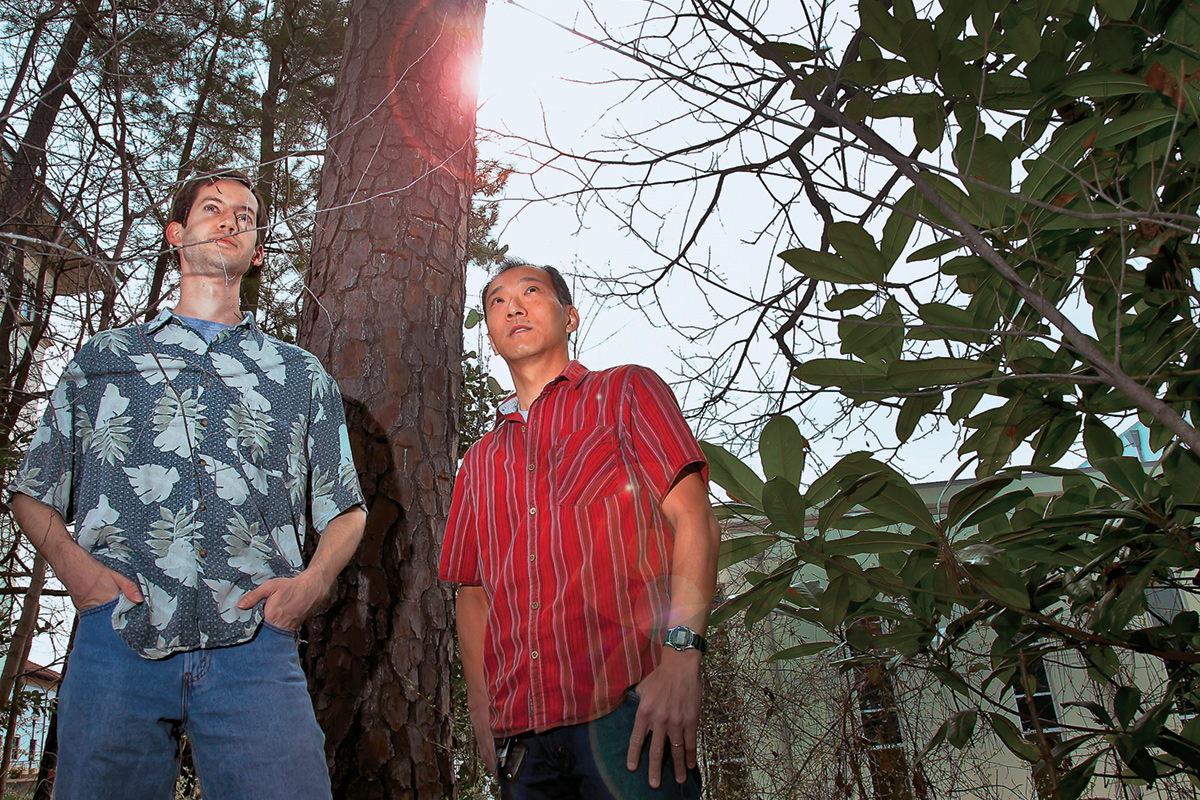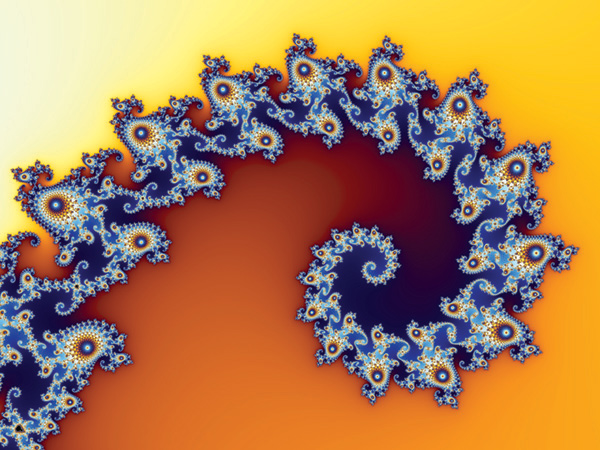The New Math
Fresh theories reveal the ancient nature of numbers

Kay Hinton

Wolfgang Beyer/Wikipedia
For centuries, some of the greatest names in math have tried to make sense of partition numbers, the basis for adding and counting.
Many mathematicians added major pieces to the puzzle, but all of them fell short of a full theory to explain partitions. Instead, their work raised more questions about this fundamental area of math.
Emory mathematician Ken Ono is unveiling new theories that answer these old questions. Ono and his research team have discovered that partition numbers behave like fractals—rough geometric shapes made up of repeating patterns that appear the same when viewed at any size or magnification. They have unlocked the divisibility properties of partitions and developed a mathematical theory for "seeing" their infinitely repeating superstructure. And they have devised the first finite formula to calculate the partitions of any number.
"Our work brings completely new ideas to the problems," Ono says. "We prove that partition numbers are 'fractal' for every prime. These numbers, in a way we make precise, are self-similar in a shocking way. Our 'zooming' procedure resolves several open conjectures, and it will change how mathematicians study partitions."
The work was funded by the American Institute of Mathematics (AIM) and the National Science Foundation. Last year, AIM assembled the world's leading experts on partitions, including Ono, to attack some of the remaining big questions in the field. Ono, who is a chaired professor at both Emory and the University of Wisconsin–Madison, led a team consisting of Jan Bruinier, from the Technical University of Darmstadt in Germany; Amanda Folsom, from Yale; and Zach Kent, a postdoctoral fellow at Emory.
"Ken Ono has achieved absolutely breathtaking breakthroughs in the theory of partitions," says George Andrews, professor at Pennsylvania State University and president of the American Mathematical Society. "He proved divisibility properties of the basic partition function that are astounding. He went on to provide a superstructure that no one anticipated just a few years ago. He is a phenomenon."
On the surface, partition numbers seem like mathematical child's play. A partition of a number is a sequence of positive integers that add up to that number. For example, 4 = 3+1 = 2+2 = 2+1+1 = 1+1+1+1. So we say there are five partitions of the number four.
It sounds simple, and yet the partition numbers grow at an incredible rate. The amount of partitions for the number ten is forty-two. For the number one hundred, the partitions explode to more than 190,000,000.
"Partition numbers are a crazy sequence of integers which race rapidly off to infinity," Ono says. "This provocative sequence evokes wonder, and has long fascinated mathematicians."
But until the breakthroughs by Ono's team, no one was able to unlock the secret of the complex pattern underlying this rapid growth.
The work of eighteenth-century mathematician Leonhard Euler led to the first recursive technique for computing the partition values of numbers. The method was slow, however, and impractical for large numbers. For the next 150 years, the method was only successfully implemented to compute the first 200 partition numbers.
"In the mathematical universe, that's like not being able to see farther than Mars," Ono says.
In the early twentieth century, Srinivasa Ramanujan and G. H. Hardy invented the circle method, which yielded the first good approximation of the partitions for numbers beyond 200. "This is like Galileo inventing the telescope, allowing you to see beyond what the naked eye can see, even though the view may be dim," Ono says.
Ramanujan also noted some strange patterns in partition numbers. In 1919 he wrote: "There appear to be corresponding properties in which the moduli are powers of five, seven, or eleven . . . and no simple properties for any moduli involving primes other than these three."
The legendary Indian mathematician died at the age of thirty-two before he could explain what he meant by this mysterious quote, now known as Ramanujan's congruences.
In 1937, Hans Rademacher found an exact formula for calculating partition values. While the method was a big improvement over Euler's exact formula, it required adding together infinitely many numbers that have infinitely many decimal places. "These numbers are gruesome," Ono says.
In the ensuing decades, mathematicians have kept building on these breakthroughs, adding more pieces to the puzzle. Despite the advances, they were unable to understand Ramanujan's enigmatic words, or find a finite formula for the partition numbers.
Ono's "dream team" wrestled with the problems for months. "Everything we tried didn't work," he says.
But a eureka moment happened in September, when Ono and Zach Kent, a postdoctoral fellow, were hiking to Tallulah Falls in northern Georgia. As they walked through the woods, noticing patterns in clumps of trees, Ono and Kent began thinking about what it would be like to "walk" amid partition numbers.
"We were standing on some huge rocks, where we could see out over this valley and hear the falls, when we realized partition numbers are fractal," Ono says. "We both just started laughing."
The term fractal was invented in 1980 by Benoit Mandelbrot, who received an honorary degree from Emory in 2002, to describe what seem like irregularities in the geometry of natural forms. The more a viewer zooms into "rough" natural forms, the clearer it becomes that they actually consist of repeating patterns. Not only are fractals beautiful, they have immense practical value in fields ranging from art to medicine.
The hike sparked a theory that reveals a new class of fractals, one that dispensed with the problem of infinity for partition numbers. "It's as though we no longer needed to see all the stars in the universe, because the pattern that keeps repeating forever can be seen on a three-mile walk to Tallulah Falls," Ono says.
Ramanujan's congruences are explained by their fractal theory. The team also demonstrated that the divisibility properties of partition numbers are "fractal" for every prime. "The sequences are all eventually periodic, and they repeat themselves over and over at precise intervals," Ono says. "It's like zooming in on the Mandelbrot set," he adds, referring to the most famous fractal of all.
But this extraordinary view into the superstructure of partition numbers was not enough. The team was determined to go beyond mere theories and hit upon a formula that could be implemented in the real world.
The final eureka moment occurred near another Georgia landmark: Spaghetti Junction. Ono and Jan Bruinier were stuck in traffic near the notorious Atlanta interchange. While chatting in the car, they hit upon a way to overcome the infinite complexity of Rademacher's method. They went on to prove a formula that requires only finitely many simple numbers.
"We found a function, that we call P, that is like a magical oracle," Ono says. "I can take any number, plug it into P, and instantly calculate the partitions of that number. P does not return gruesome numbers with infinitely many decimal places. It's the finite, algebraic formula that we have all been looking for."






